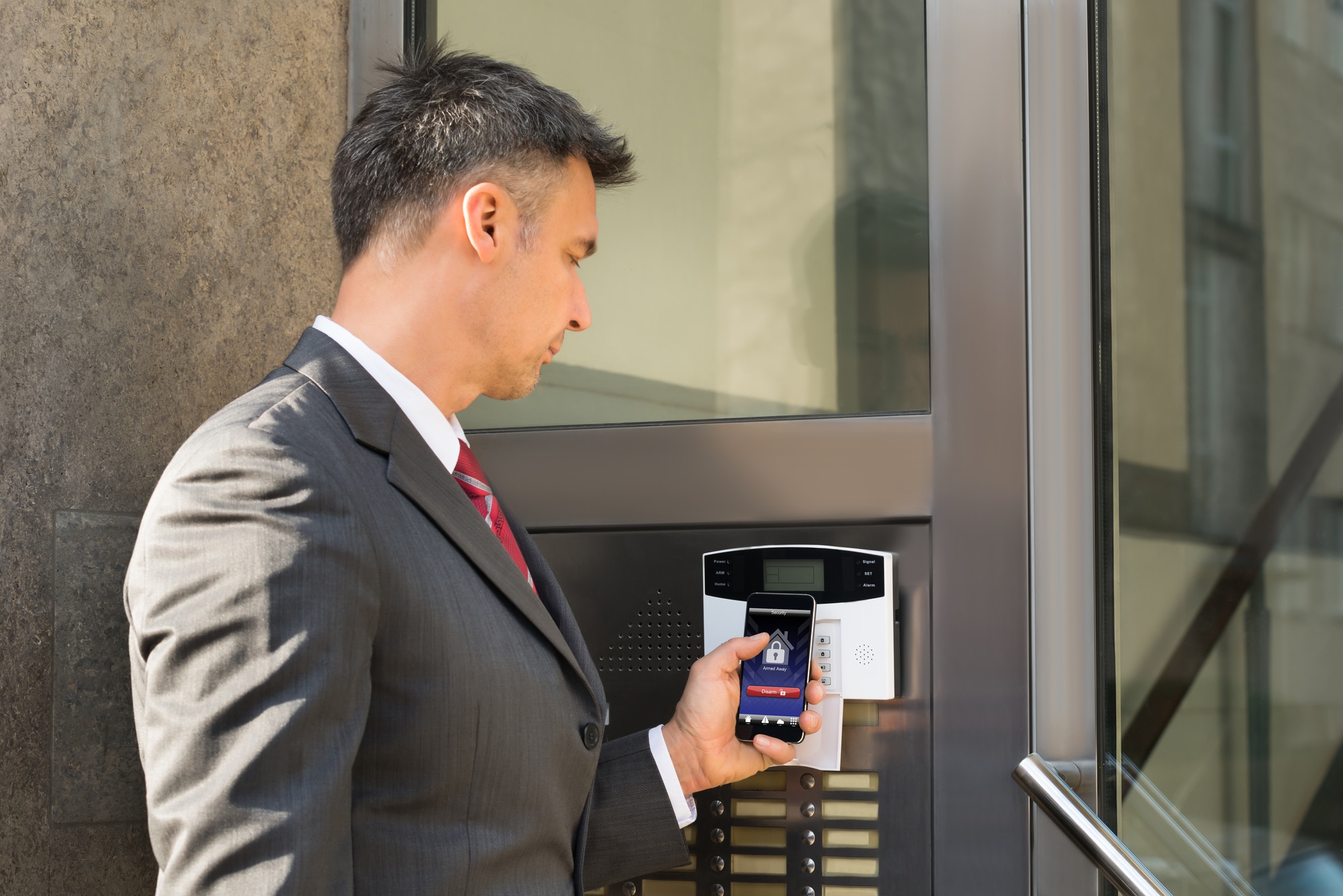In an era where security is paramount, access control systems have become a linchpin in safeguarding assets, information, and personnel. Despite their growing prevalence and importance, there remains a cloud of myths and misconceptions surrounding these systems. These fallacies often deter organizations from implementing or upgrading their security infrastructure, leaving them vulnerable to potential threats.
The purpose of this comprehensive blog post is to dispel these myths and shed light on the realities of access control systems. Access control goes beyond simple lock-and-key mechanisms; it encompasses a range of solutions from digital keypads to sophisticated biometric systems, designed to manage entry into physical and virtual spaces securely and efficiently. By delving into and debunking the common myths, we aim to provide a clearer understanding of how access control systems can be a game-changer for organizations of all sizes and sectors.
As we navigate through these misconceptions, remember that the goal is not just to challenge these beliefs but to arm you with the knowledge needed to make informed decisions about your security needs. Whether you’re a small business owner pondering over enhancing your security or an IT manager at a large corporation considering an access control overhaul, this post will offer valuable insights to guide your journey in optimizing your security infrastructure.
Let’s embark on this myth-busting journey and uncover the truths about access control systems.
Myth 1: Access Control Systems Are Only for Large Corporations
One of the most pervasive myths about access control systems is that they are exclusively beneficial for large, sprawling corporate entities. This misconception stems from the notion that only big organizations have assets worth protecting to a degree that justifies the investment in such systems. However, this couldn’t be further from the truth.
In reality, businesses of all sizes have assets – be it physical or data – that are valuable and vulnerable to security breaches. Small and medium-sized enterprises (SMEs) often face similar, if not greater, risks as their larger counterparts. The difference is that SMEs might not have the same resources to recover from a security breach, making the need for effective access control even more critical.
Moreover, access control systems are more scalable and affordable than ever before. Modern solutions can be tailored to the specific needs and budgets of smaller businesses, ensuring that they only pay for the features they require. This scalability allows SMEs to start with a basic system and expand as they grow, making access control a viable and prudent investment for businesses of all sizes.
Myth 2: Access Control Systems Are Too Expensive
A common deterrent for many businesses when considering access control systems is the perceived high cost. It’s often thought that such systems come with a hefty price tag, making them an impractical choice for budget-conscious organizations. However, this view overlooks the long-term value and potential cost savings these systems offer.
Firstly, the market for access control systems has evolved, now offering a range of options catering to different budgetary needs. From basic keypad entry systems to more advanced biometric solutions, businesses can select a system that aligns with their financial constraints. Additionally, many systems are modular, allowing organizations to start small and expand as needed.
When evaluating the cost, it’s important to consider the return on investment (ROI). Access control systems not only prevent theft and unauthorized access but also reduce the likelihood of internal security breaches, potentially saving organizations substantial sums in the long run. Furthermore, they often reduce the need for physical security personnel, leading to further cost savings.
Additionally, there’s the intangible value of peace of mind. Knowing that assets, data, and personnel are well-protected can be invaluable for a business. In the modern business landscape, where security threats are increasingly sophisticated, the cost of not having a robust access control system could be far greater than the investment in one.
In summary, while the initial investment in an access control system may seem significant, the long-term benefits and potential cost savings make it a financially sound decision for many businesses.
Myth 3: Access Control Is Just About Opening Doors

The third myth to address is the oversimplified view that access control systems are just about opening and closing doors. This narrow perspective fails to recognize the full spectrum of functionalities and benefits these systems offer. Access control technology has advanced far beyond simple entry and exit mechanisms.
Key functionalities include:
- Monitoring and Reporting: Modern access control systems offer comprehensive monitoring capabilities. They keep detailed logs of who enters and exits, when they do so, and sometimes even the specific locations they access within a facility. This data is crucial for security audits and investigations.
- Integration with Other Security Systems: Access control systems often integrate seamlessly with other security measures, such as surveillance cameras, alarm systems, and fire safety systems. This integration provides a holistic security solution, enhancing overall safety and operational efficiency.
- Customizable Access Rights: These systems allow for the customization of access rights for different individuals or groups. For example, certain staff members can be granted access to specific areas while restricting their entry to others, enhancing internal security and operational control.
- Data Analytics Capabilities: Some advanced systems come equipped with data analytics tools. They can analyze entry and exit patterns to optimize staffing and enhance overall security strategy.
- Remote Control and Management: With mobile integration, many access control systems now allow remote monitoring and management. This feature enables administrators to control access rights from anywhere, adding an extra layer of convenience and flexibility.
Far from being just about door control, modern access control systems are sophisticated tools that enhance security, operational efficiency, and data management. They play a crucial role in the broader context of an organization’s security and operational strategy.
Myth 4: Access Control Systems Are Invasive and Compromise Privacy
A prevalent concern about access control systems, especially those using biometric technologies, is that they are invasive and pose a threat to personal privacy. While it’s understandable to be cautious about technologies that use personal data, most modern access control systems are designed with strict privacy protocols in mind.
- Privacy by Design: Access control systems often use encryption and secure data storage methods to protect personal information. For instance, biometric systems usually store data as mathematical representations rather than actual images of fingerprints or faces.
- Regulatory Compliance: Manufacturers of these systems are increasingly mindful of privacy laws like the General Data Protection Regulation (GDPR) in Europe. They ensure that their products comply with these regulations, safeguarding individual privacy rights.
- Controlled Data Access: Access to the data collected by these systems is typically restricted and monitored. Only authorized personnel can view or manage this data, reducing the risk of misuse.
- Transparency and Consent: In many cases, the use of these systems is subject to user consent. Organizations are required to inform users about what data is collected and how it is used, providing transparency.
Understanding these aspects can help alleviate concerns about privacy invasion. When implemented responsibly, access control systems can enhance security without compromising individual privacy rights.
Myth 5: Access Control Systems Are Prone to Hacking and Are Not Secure
The myth that access control systems are easily hackable and therefore not secure is another misconception that needs addressing. Like any technology, access control systems can be vulnerable, but the industry has made significant strides in ensuring these systems are robust and secure.
- Advanced Encryption: Modern access control systems use advanced encryption techniques to protect data transmission. This makes it extremely difficult for unauthorized entities to intercept and decipher sensitive information.
- Regular Software Updates: Manufacturers regularly update their software to address potential vulnerabilities and enhance security features. Staying updated is key to maintaining a secure system.
- Multi-Factor Authentication: Many systems now incorporate multi-factor authentication (MFA), requiring multiple forms of verification before granting access, significantly enhancing security.
- Professional Installation and Maintenance: When installed and maintained by professionals, these systems are configured to minimize vulnerabilities. Regular maintenance checks also ensure that any potential security gaps are promptly addressed.
In conclusion, while no system is entirely invulnerable, modern access control systems are designed with a high degree of security in mind. With the right practices in place, they are a reliable and secure solution for managing access and protecting assets.
Myth 6: Installation and Maintenance Are Too Complex and Disruptive

- Professional Installation: Access control systems are typically installed by professional technicians who are skilled in ensuring a smooth, efficient setup. They work to minimize disruption and can often schedule installations during off-hours to avoid impacting business operations.
- User-Friendly Interfaces: Modern systems are designed with user experience in mind. They often feature intuitive interfaces that make day-to-day management straightforward for non-technical staff.
- Scalable Solutions: Many access control systems are modular, allowing businesses to start with a basic setup and expand or upgrade as their needs change, without requiring a complete overhaul.
- Routine Maintenance: Regular maintenance is crucial for ensuring the longevity and effectiveness of the system. Maintenance procedures are usually straightforward and can be performed with minimal disruption. Service providers often offer maintenance plans to keep systems running optimally.
- Training and Support: Reputable access control system providers offer training for your staff and ongoing support to address any issues or questions that arise.
Understanding that the implementation and upkeep of these systems are manageable and can be tailored to fit the specific needs of a business helps in overcoming this myth.
Myth 7: Access Control Doesn’t Work During Power Outages or Network Failures
The belief that access control systems become non-functional during power outages or network failures is another common misconception. In reality, most modern systems are equipped with features to ensure they remain operational during such incidents:
- Backup Power Solutions: Many systems have battery backups or are connected to emergency power supplies to ensure they continue to function during a power outage.
- Offline Functionality: Some access control systems can operate in an offline mode, allowing basic functionality even when network connectivity is lost.
- Fail-Safe and Fail-Secure Options: Systems can be set up as either fail-safe (doors unlock during power failure) or fail-secure (doors remain locked during power failure), depending on the security needs of the facility.
Understanding these functionalities can reassure decision-makers that access control systems are reliable even in less-than-ideal situations.
Myth 8: Biometric Access Control Is Unreliable and Inaccurate
Biometric access control systems, which include fingerprint, facial recognition, and iris scanning technologies, are sometimes perceived as unreliable and inaccurate. This myth, however, overlooks the significant technological advancements that have been made in recent years.
- Technological Advancements: Modern biometric systems are highly sophisticated and have greatly improved in terms of accuracy and reliability. Technologies like 3D facial recognition and advanced fingerprint sensors have significantly reduced false positives and negatives.
- Environmental Adaptability: These systems are now designed to be more adaptable to various environmental conditions, such as low light or high humidity, which previously affected performance.
- Continuous Learning Algorithms: Many biometric systems use algorithms that learn and adapt over time, improving their accuracy with each use.
- Hybrid Systems: For added security and reliability, biometric systems are often used in conjunction with other forms of authentication, such as PINs or access cards, in a multi-factor authentication setup.
Myth 9: Traditional Keys Are Just as Good as Modern Access Control
Some believe that traditional physical keys and locks are as effective as modern access control systems. This myth fails to acknowledge the limitations and risks associated with traditional key systems.
- Limited Security Features: Unlike access control systems, traditional keys cannot provide detailed logs of who accessed a location and when. If a key is lost or copied, it can pose a significant security risk.
- No Instant Access Control: With physical keys, if security is breached, locks must be manually changed. In contrast, access control systems allow for instant modification of access rights.
- Lack of Scalability: Traditional key systems become increasingly unwieldy and complex as a facility grows. Access control systems, conversely, can easily scale with the expansion of a business.
Myth 10: All Access Control Systems Are the Same
A final myth to dispel is the idea that all access control systems are identical in functionality and performance. In reality, there is a wide variety of systems available, each with different features and capabilities.
- Different Types of Systems: From basic keypad entry systems to sophisticated biometric and IoT-based solutions, the range of available access control systems is vast.
- Customizable Solutions: Access control systems can be customized to fit the specific needs of a business, taking into account factors like the size of the facility, the nature of the business, and specific security concerns.
- Integration Capabilities: Different systems offer varying levels of integration with other security technologies, impacting their overall effectiveness and convenience.
Final Thoughts
 Access control systems are an integral part of modern security strategies, but misconceptions about their cost, complexity, and functionality can hinder their adoption. By debunking these myths, we hope to provide a clearer understanding of how these systems work and the value they bring. Whether it’s enhancing security, improving operational efficiency, or ensuring compliance with regulatory standards, access control systems offer solutions that go far beyond traditional security measures.
Access control systems are an integral part of modern security strategies, but misconceptions about their cost, complexity, and functionality can hinder their adoption. By debunking these myths, we hope to provide a clearer understanding of how these systems work and the value they bring. Whether it’s enhancing security, improving operational efficiency, or ensuring compliance with regulatory standards, access control systems offer solutions that go far beyond traditional security measures.
For those considering the implementation or upgrade of an access control system, it’s important to consult with experts who can provide tailored advice and solutions. LogicFortress offers a range of access control solutions and expertise to help secure your assets and streamline your operations.




